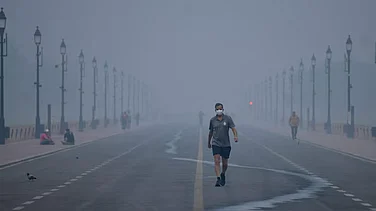President Droupadi Murmu on Thursday evening presented the President’s Bodyguard (PBG) with the Silver Trumpet and the Trumpet Banner in a ceremony in Delhi.
"In the one-and-half-hour-long ceremony, the President's Bodyguard will accept President's Silver Trumpet and Trumpet Banner. The presentation parade shall thereafter be followed by an audio-visual presentation highlighting the history and significance of the Silver Trumpet and Trumpet Banner and the modern-day role of the President's Bodyguard," said an earlier statement of the Rashtrapati Bhavan.
Professionally honed with precision and trained to perfection, the horsemen displayed a variety of traditional Indian equestrian skills followed by the horses trotting in line with the music of the military band.
Who is the President’s Bodyguard?
The oldest surviving mountain unit, the PBG is the oldest regiment of the Indian Army. The primary role of the President's Bodyguard is to escort and protect the President of India which is why the regiment is based in the Rashtrapati Bhawan in New Delhi, India.
The PBG is equipped as a mounted unit, with horses for ceremonies at the presidential palace and BTR-60 vehicles for use in combat.
The personnel of the regiment are also trained as paratroopers and nominally are expected to lead in airborne assaults in the role of pathfinders.
Army’s oldest regiment
The regiment is the successor of the Governor General's Bodyguard of the British Raj.
The first PBG was raised in India by Governor General Warren Hastings in September 1773. Back then, the Europeans, already recruited into the East India Company's service as infantry, were taken as personnel of the regiment.
The first commander of the unit was Captain Sweeny Toone, an officer of the EIC. However, the regiment was later disbanded by Robert Clive in around 1765.
Initially, the regiment comprised one Lieutenant, four Sergeants, one Ferrier, six Daffadars, 100 troopers, and two Trumpeters.
Today, the President’s Bodyguard is a select body of hand-picked men with special physical attributes. They are chosen after a rigorous and physically gruelling process.
On January 27, 1950, the regiment was renamed the President’s Bodyguard.
PBG first saw action in 1773-74 when it was deployed against Sanyasis – a band that ravaged the countryside in the guise of mendicants. Its next campaign was against Rohillas in April 1774 in the battle of St. George where Rohillas were defeated completely.
Throughout its history, the Bodyguard has varied in size from 50 men when first raised, to 1929 men in 1845. However, it was usually around squadron size or about 130 men.
Silver Trumpet and Banner
As the President of India’s own Guard, it has the unique distinction of being the only military unit of the Indian Army that is privileged to carry the President’s Silver Trumpet and Trumpet Banner.
The cavalryman’s life is woven around the calls of the trumpet giving it pride of place in unit traditions and ethos. The prestige of the unit is further enhanced by the trumpet banner it carries.
In 1923, when the Bodyguard completed 150 years of service, the then Viceroy, Lord Reading, presented this distinction on the President’s Bodyguard. One banner represented the Star of India with the battle honours of the regiment and the other banner carried the coat-of-arms of the viceroy. Each succeeding Viceroy, thereafter, presented the Silver Trumpet and Trumpet Banner to the Bodyguard.
Rather than a coat of arms, as was the practice in the colonial era, the monogram of the President appears on the Banner. Dr Rajendra Prasad, the first President of India, presented his Silver Trumpet and Trumpet Banner to the President’s Bodyguard on May 14, 1957.
















